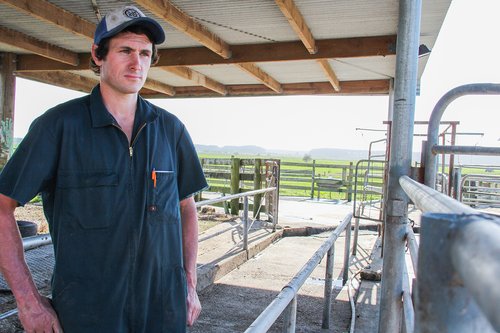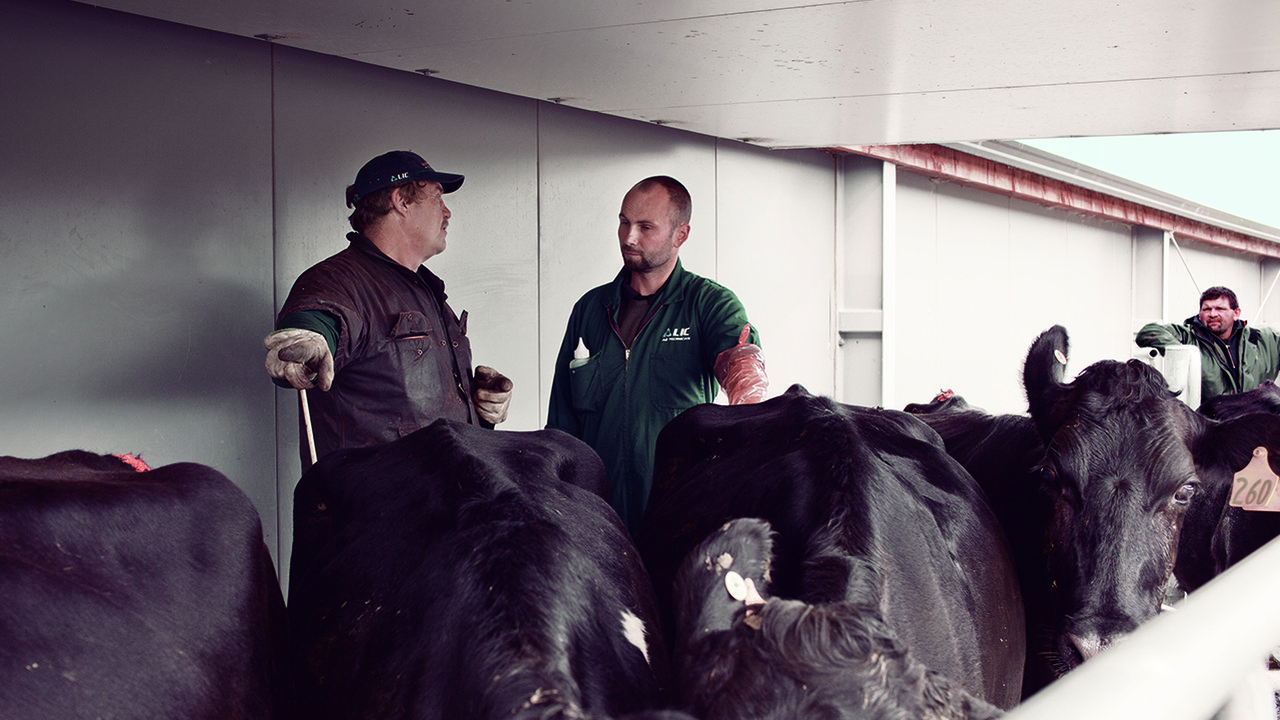When it comes to artificial breeding (AB) facilities, it’s a contrasting tale of standards between the two Te Puke farms owned by Bobby Dean and his parents, Bruce and Debbie.
“Our home farm’s AB facilities are gold status,” says Bobby.
“We’ve got a few minor things still to do before AB starts – to do with signage and hygiene.”
The main farm, milking 650 cows, boasts a large shaded area and infrastructure that can hold between 16 and 20 Holstein-Friesians for AB.
 “We’ve built it up over the years, it used to hold only 10 cows at a time, but we expanded it because we wanted it to hold at least the number of straws the technician has – normally Hayden (the AB Technician) has 15 straws at a time,” Bobby says.
“We’ve built it up over the years, it used to hold only 10 cows at a time, but we expanded it because we wanted it to hold at least the number of straws the technician has – normally Hayden (the AB Technician) has 15 straws at a time,” Bobby says.
“We’re at gold standard but we need to mark where the entrances are and decide where to put the foot bath – we normally have a hose and brush but we need to go a bit further than that and have a dedicated spot for biosecurity and hygiene.
Technician's nod of approval
“Hayden likes it because it’s the first farm on his run. We’re able to start milking and by daybreak (6am) – when we’re about three-quarters of the way through milking, we’d usually have about 30 cows set aside ready for AB.
“Because the facility is completely independent of milking, the technician can start his job. By the time we’ve finished milking, all the cows are drafted and he’ll be nearly finished AB.
“It’s very efficient.”
Better repro results; better health & safety management
But the facilities of their small farm down the road, which milks 175 Holstein-Friesians, don’t yet reach the bronze standard.
Bobby says the infrastructure will be fixed up during dry-off so they’re all-set for spring.
“At the smaller farm, when we do big jobs like CIDR’ing, it’s so enclosed and it’s not very good for loading (a standard task for an AB Technician).
“It’s too close and cramped, and makes workers too vulnerable because you’re loading straws in the centre of the shed. If we’re doing CIDR’ing and the technician comes, he’ll load somewhere else and then bring in the straws.
"It’s not ideal."
Buffing it up to bronze
Better attention to the job-at-hand and health and safety is a priority, so changes are being made, Bobby says.
“On a normal day, we’ll just use the vet bail for AB which is outside the rotary – but that’s part of the exit race from the shed.
“So we’re fixing that up to make it better. We’re cutting the vet bail, and setting up two gates so that the row of cows can be shut off and the technician can come in from the side, so he’ll be secure and the cow should be nicely settled,” Bobby says.
“The cows behind won’t be able to keep pushing up. With the gate, the one cow that’s getting inseminated won’t be able to back up.
“That’ll bring it up to bronze standard for AB.
"Because it’s a small farm and typically has only up to five cows a day for insemination, it’s hard to justify a big investment.
"Ideally we’d get something like this (the gold-standard farm’s facilities), but it can’t be justified right now – maybe in time.”
Checking AB facilities
LIC’s AB Facilities solutions team is visiting farms nationwide checking facilities and discussing on-farm biosecurity with farm owners and managers.
The purpose is to improve the standard of AB facilities, helping farmers get better repro results and improving on-farm health and safety.
- Herringbone sheds are being addressed first, as well as grazing locations where AB is carried out, followed by farms with rotary sheds.
- LIC’s aim is complete all facility visits by the beginning of the spring AB season.
- At the visit, facilities are graded non-compliant, bronze, silver, or gold.
- The minimum standard, bronze, incorporates recommended requirements by WorkSafe NZ.
- Farmers are encouraged to achieve gold status, but as long as bronze is met no further action is needed.
- Non-compliant facilities come with feedback on specific changes needed.





